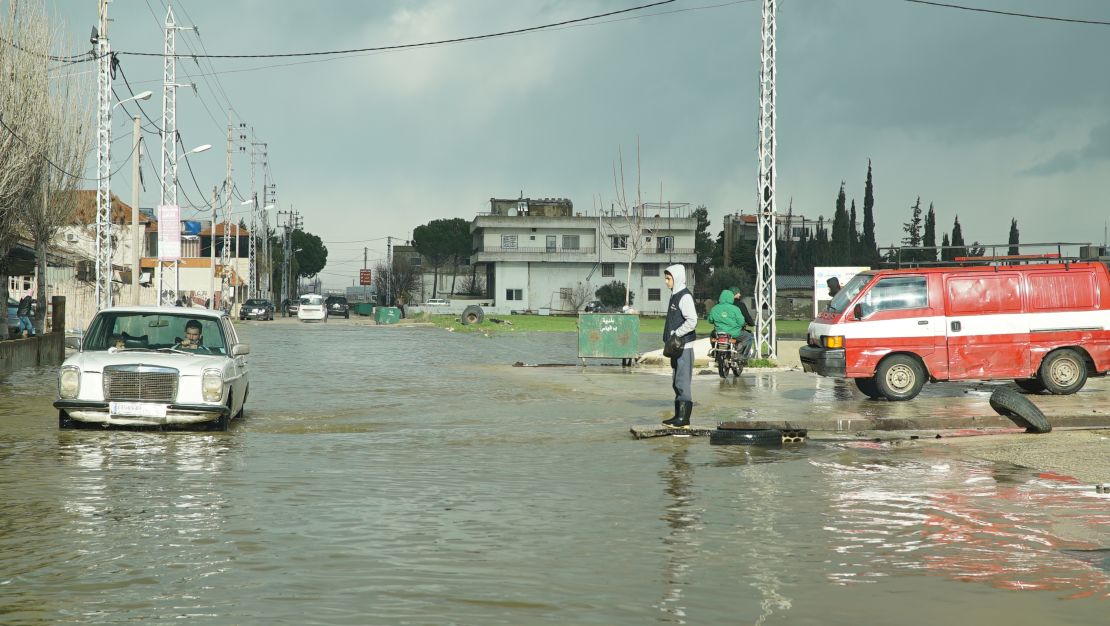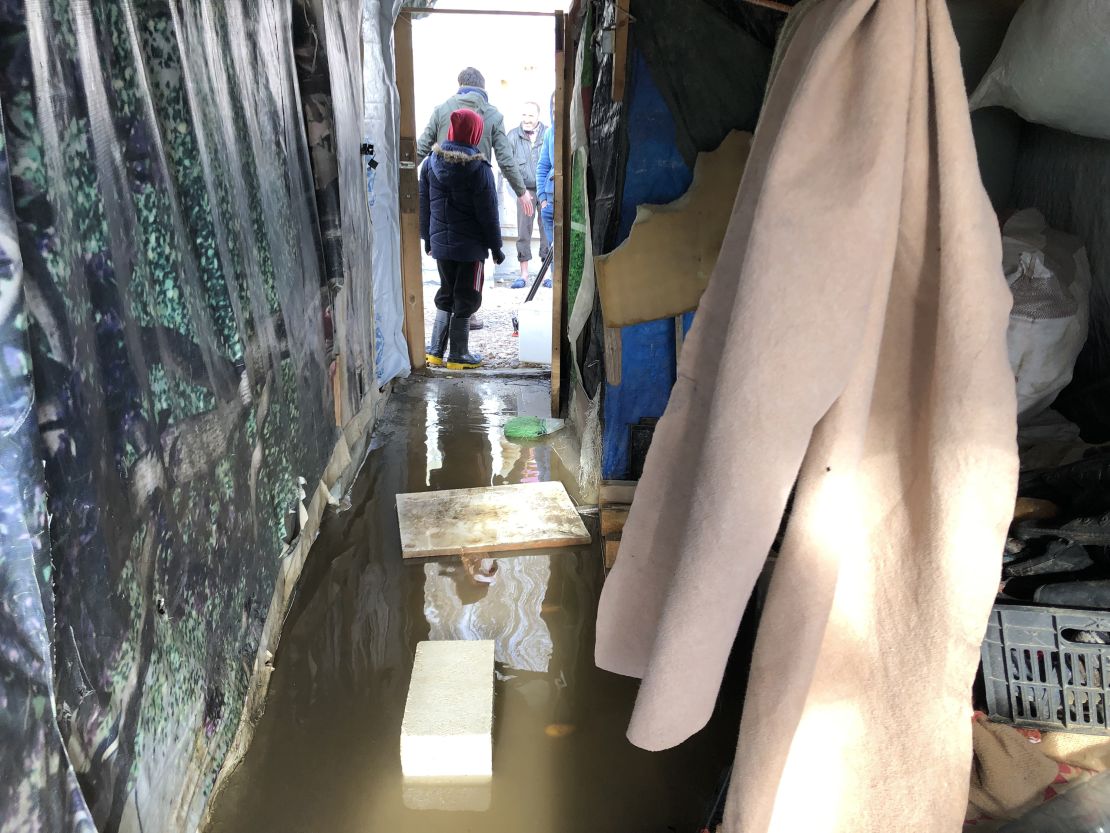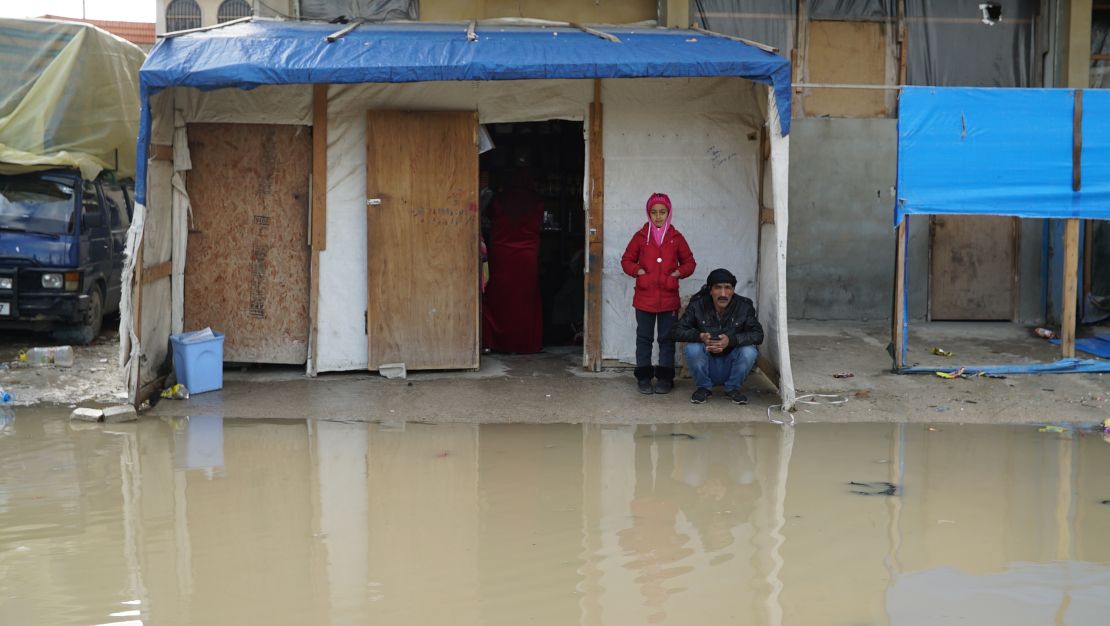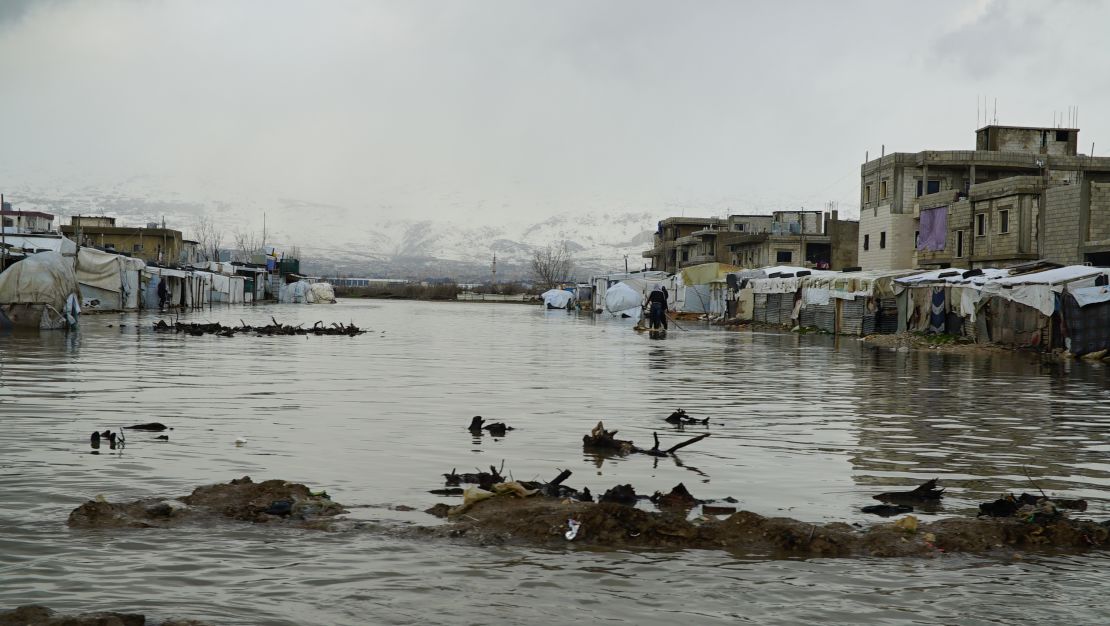Mohamed Kassaf, 32, was in his tent with his four children when a storm hit. The river outside Hoor refugee camp overflowed. Rain and sewage water seeped through the tent’s tarpaulin sheets.
“The water went from tent to tent. We kept moving from room to room until I couldn’t take it anymore. I had the kids sent somewhere else,” recalls Kassaf. He spent the night in his bed soaked and waiting for the storm to pass.
The water rose to nearly half a meter at many of the Syrian refugee camps in Lebanon’s Bekaa Valley this week. Aid workers in the area say that some 600 refugee families were forced to evacuate their homes, braving rain, sleet and strong winds to find shelter. They trudged through sewage water that burst through the drainage system to get to shelter.
In the northern town of Minyeh, an 8-year-old Syrian girl died during the storm after she fell into a river and drowned.
Rahma Mohammed Ali, 60, is visually impaired and lives in a tent on her own. When the storm that meteorologists called Norma struck on Monday, her neighbors helped her get out. “It was chaotic and completely humiliating. And the smell of the sewage was just deadly,” says Ali.

The storm covered much of Lebanon’s mountains in snow, damaged some of the capital’s largest bridges and washed over its seaside towns. In its low-lying areas, such as the Bekaa plains, near-freezing temperatures came with floods.
As with every Lebanese winter since the start of the Syrian war in March 2011, Syrian refugees were the hardest hit. The camps speckle the Bekaa plains, parts of northern Lebanon as well as the mountains near the border region of Arsal where the tents are blanketed with snow.
Storm Norma, aid workers and refugees say, is the worst they endured in years.
“We always used to joke that the people of the Bekaa plains were demanding that the government give us a beach,” says Meshaal Hammoud, operations manager at the local organization SAWA for Development and Aid. “Well, now the sea has come to us.”
“This storm was an absolute disaster,” says Hammoud, himself a Syrian refugee.

Though many of the more than 1 million Syrian refugees in Lebanon have lived in the country for the last seven years, their dwellings appear to have been made for a short stay. The tents of the refugee camps are made of tarpaulin, corrugated iron and wooden planks. The refugees try to prop up their shelters with extra fabrics and nylon, but little can protect them from extreme weather, a yearly occurrence in Lebanon.
“There is a terrible infrastructure where the camps are and because these aren’t permanent structures, we face the same issues every year,” says SAWA for Development and Aid director Rouba Mhaissen, who has been leading a fundraising effort to help affected refugees.
The group raised more than $40,000 on the day the storm hit and helped evacuate more than 20 Syrian refugee camps, providing the evacuees with shelter, food, mattresses and blankets.

It is a hard-fought effort to counteract a decrease in aid for Syria’s refugees. In May, the United Nations warned of a “critical gap” in funding for Syrian refugees in 2018. Only 18-22% of required funds were met, according to the UN.
In Lebanon, 12% of the Syrian refugee aid program was funded in 2018.
As Syria’s war quietens, aid workers warn, the plight of its refugees endures.
“The misery is increasing in the camps, because the aid is decreasing,” says Mhaissen. “Even though the war has diminished in intensity, still the refugees can’t go back because they have other concerns.”

Refugees remain concerned about conscription in the Syrian army, the lack of habitation in a country devastated by war, and fear political vengeance against those who sided with Syria’s opposition in its fight against Syrian President Bashar al-Assad.
“I’ve never received less aid than I did this year,” says Fatima Saleem al-Khalife, 30, as she cradles her toddler Ahmad. “I have to pay LL100,000 ($66) a month for the land this tent is on … and I still need to get fabric to cover my house.”
Ahmad came down with the flu during the storm, and nearly choked on her breast milk because of his nasal congestion, she says.
“Wherever you went there was wind and cold and wetness,” she says as she gestures at the nylon sheets covering her home.

Mohammed Kassaf wears rain boots and wades through the puddles that submerge the floors of his tent. He lays out wooden planks and rocks that visitors ill-equipped for the weather can walk on to stay dry.
Sitting on the only bed in the tent, with piles of mattresses wrapped together on a high shelf, he waits out the end of the storm so his children can return.
“What did the kids do to deserve this? They ask me when they’re coming back to the tent because they were born in the tent,” says Kassaf. “They don’t know that we are displaced people, refugees living under tarpaulin.”
“In the summer, the sun burns us, and in the winter, as you have seen, the water floods. We don’t know where to go and who’s going to receive us.”
To contribute to the relief effort to help Syrian refugees, you may donate to SAWA for Development and Aid at http://www.sdaid.org/



